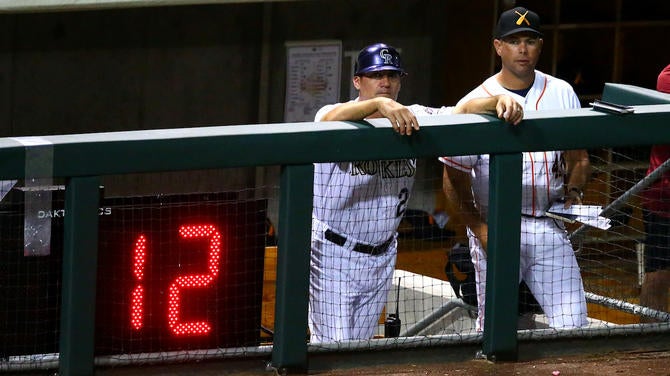A hallmark of the still young tenure of MLB commissioner Rob Manfred has been his emphasis on whittling down game times and improving pace of play. On that front, it would seem that Manfred isn't done pressing for change:
Commissioner Rob Manfred would like to see a pitching clock implemented in majors just as they have in minors
— Bob Nightengale (@BNightengale) August 18, 2016
As noted above, such a device is already in use at the minor-league level and has been since the start of the 2015 season, which followed a trial run in the Arizona Fall League. Here's a look at the AFL clock ...

Said pitch clock allows a maximum of 20 seconds between pitches. For context, the average major-league pitcher in 2016 has averaged 22.6 seconds between pitches.
Without question, pitch clocks at the major-league level is a matter for the Collective Bargaining Agreement, which governs the labor relationship between players and owners and is up for renewal following the 2016 season. Players may not like the idea of the pitch clock, especially since pitch clocks at the minor-league level in essence "train" incoming ballplayers to conform to that time limit. Of course, everything's a negotiation, and if Manfred and owners see this is as something worth prioritizing, then they'll bargain for it.
The key, though, will be to make pitch clocks, should they come to pass at the highest level, as seamless as possible and prevent them from upsetting the build-up between pitches, which, to hear a lot of fans tell it, is part of the game's charm.

















